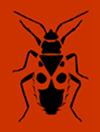微生境对捕光器捕获的飞蛾数量的影响大于草地生境中使用的紫外线灯类型
IF 1.2
3区 农林科学
Q2 Agricultural and Biological Sciences
引用次数: 3
摘要
在旱地和果园草甸两种草地生境中,利用不同强度和波长组成的三种昆虫学LED灯对夜间鳞翅目11科161种2257只进行了捕获,比较了它们的性能。该研究于2020年6月和7月在Jenzig保护区(德国耶拿,50°56°12ºN, 11°37º37ºE)进行。在每个栖息地中,我们采样了三个微栖息地,这些微栖息地要么是暴露的,要么是适度遮蔽的,要么是遮蔽的。数据分析采用广义线性混合模型。高辐射通量灯(lepile max: 1.34 W混合辐射)比低辐射通量灯(lepile mini: 0.55 W混合辐射)多吸引37%的飞蛾和5%的物种。与仅使用紫外线照射的灯相比(le堆最大开关紫外线模式:0.59 W),最大灯吸引的飞蛾数增加17%,物种数量增加6%。然而,最大灯仅在暴露的微生境中表现明显更好,而紫外线灯在遮蔽和适度遮蔽的生境中表现相似。干草地生境的捕获个体数大于果园草甸(1288对969),而两种生境的捕获物种数相似(120对128)。中等遮蔽点捕获的个体数量高于遮蔽和暴露点(935 vs. 773 vs. 549)。在物种数量上也出现了同样的趋势(119 vs 113 vs 110)。不同灯诱捕器捕获的飞蛾群落相似。我们得出结论,即使使用不同的灯,光捕获也是一种可靠的方法,可以提供可比较的结果。使用几盏弱灯比使用一盏强灯更有效,捕获量也更大。本文章由计算机程序翻译,如有差异,请以英文原文为准。
The number of moths caught by light traps is affected more by microhabitat than the type of UV lamp used in a grassland habitat
We compared the performance of three entomological LED lamps that differed in intensity and wavelength composition by using them to catch 2257 individuals of 161 species and 11 families of nocturnal Lepidoptera in two grassland habitats (dry grassland and orchard meadow). The study was carried out in June and July 2020 in the Jenzig conservation area (Jena, Germany, 50°56 ́12 ̋N, 11°37 ́37 ̋E). In each habitat, we sampled three microhabitats that were either exposed, moderately sheltered or sheltered. Data were analysed using generalized linear mixed models. A lamp with high radiant fl ux (LepiLED maxi: 1.34 W mixed radiation) attracted 37% more moths and 5% more species than a lamp with a lower radiant fl ux (LepiLED mini: 0.55 W mixed radiation). The maxi lamp also attracted 17% more moths and 6% more species than the same lamp with UV radiation only (LepiLED maxi switch UV mode: 0.59 W). However, the maxi lamp only performed signifi cantly better in exposed microhabitats, whereas the UV lamp performed similarly in the sheltered and moderately sheltered sites. The number of individuals caught in the dry grassland habitat was greater than in the orchard meadow (1288 vs. 969), whereas the number of species was similar in both habitats (120 vs. 128). Higher numbers of individuals were caught in the moderately sheltered sites than in the sheltered and exposed sites (935 vs. 773 vs. 549). The same trend was seen in the number of species (119 vs. 113 vs. 110). The communities of moths caught by traps with different lamps were similar. We conclude that light-trapping is a robust method that delivers comparable results even when different lamps are used. The use of several weak lamps is more effi cient and results in larger catches than the use of a single strong lamp.
求助全文
通过发布文献求助,成功后即可免费获取论文全文。
去求助
来源期刊
CiteScore
2.30
自引率
7.70%
发文量
43
审稿时长
6-12 weeks
期刊介绍:
EJE publishes original articles, reviews and points of view on all aspects of entomology. There are no restrictions on geographic region or taxon (Myriapoda, Chelicerata and terrestrial Crustacea included). Comprehensive studies and comparative/experimental approaches are preferred and the following types of manuscripts will usually be declined:
- Descriptive alpha-taxonomic studies unless the paper is markedly comprehensive/revisional taxonomically or regionally, and/or significantly improves our knowledge of comparative morphology, relationships or biogeography of the higher taxon concerned;
- Other purely or predominantly descriptive or enumerative papers [such as (ultra)structural and functional details, life tables, host records, distributional records and faunistic surveys, compiled checklists, etc.] unless they are exceptionally comprehensive or concern data or taxa of particular entomological (e.g., phylogenetic) interest;
- Papers evaluating the effect of chemicals (including pesticides, plant extracts, attractants or repellents, etc.), irradiation, pathogens, or dealing with other data of predominantly agro-economic impact without general entomological relevance.

 求助内容:
求助内容: 应助结果提醒方式:
应助结果提醒方式:


